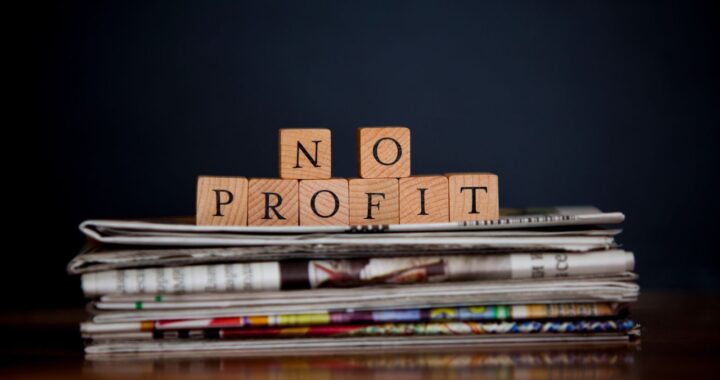
Debt Relief vs Bankruptcy: What’s The Best Option?
Debt can become overwhelming, and knowing that you have options for finding a way out is important. Two popular options for managing indebtedness are debt relief and bankruptcy. The choice between these two methods depends on several factors, such as the type and amount of debt accrued, the debtor’s income, and their ability to pay off the debt.
Debt relief is a way to negotiate with creditors to reach a more manageable repayment plan. It involves working with the lenders to reduce the interest rate, waive extra fees, or extend the loan duration to make the payments more affordable. This method aims to make the repayment process sustainable for the borrower without resorting to the legal procedures of bankruptcy. However, it’s essential to note that this approach may not work for everyone, and some creditors may not agree to the terms offered.
On the other hand, bankruptcy is a legally binding process that can help discharge debt completely or create a payment plan to repay it over time. Unfortunately, it’s a severe measure that can significantly affect a debtor’s credit score and financial standing. However, bankruptcy can be the best choice for those with overwhelming debt and the means to pay it back, but just need some breathing room.
Choosing between debt relief and bankruptcy is a major decision that should be made with careful consideration and the guidance of a financial or legal expert. Ultimately, the right choice for you will depend on your specific circumstances and financial situation.
Debt Relief Options
Debt relief and bankruptcy are options available to individuals struggling with excessive debt. While bankruptcy is typically considered a last resort, debt relief options offer alternatives.
Several debt relief options are available, including debt consolidation, debt settlement, and credit counseling. Debt consolidation involves combining multiple debts into a single loan with a lower interest rate, allowing the debtor to make one monthly payment instead of several. Debt settlement involves negotiating with creditors to settle debts for less than the total amount owed. Finally, credit counseling involves working with a professional to develop a budget and payment plan to repay debts over time.
It’s important to note that debt relief options may negatively impact a person’s credit score, but they may still be preferable to bankruptcy, which can have even more severe consequences. Bankruptcy can stay on a person’s credit report for up to ten years and may make it difficult to obtain credit, rent an apartment, or even find employment.
Before pursuing debt relief or bankruptcy, individuals should consider seeking the advice of a financial advisor or credit counselor to explore their options and develop a plan that works best for their particular situation.
In summary, while debt relief and bankruptcy are both options for those struggling with excessive debt, debt relief offers alternatives that may be less damaging to a person’s financial future. However, it’s important to carefully consider all options and seek professional advice before deciding.
Debt Relief vs Bankruptcy
When contemplating financial distress, it’s essential to consider the options available to relieve debt. Bankruptcy and debt consolidation are two of the options available. However, both have distinct advantages and disadvantages.
Debt consolidation involves taking out a loan to pay off all other loans, such as credit card debts. Typically, this type of loan has a lower interest rate than the original debts, and it may be easier to manage on a day-to-day basis than multiple debts. However, while it can effectively reduce interest on your debts and lower the monthly payments, the loan must be paid in full, or legal action may follow. In contrast, bankruptcy can eliminate all debts, and while this can hurt credit scores, it also removes the debt completely and gives debtors a fresh financial start.
On the other hand, bankruptcy carries long-term consequences for your financial future and can be the more legally complicated of the two options. It has the potential of staying on your credit report for seven to ten years, making it challenging to secure new loans or credit, not to mention the psychological impact and stigma that may arise from filing for bankruptcy. Debt consolidation, by contrast, is less severe and can help you maintain the important financial relationships, such as with reserve credit cards and lenders.
Choosing between bankruptcy and debt consolidation will ultimately depend on personal preferences and unique financial circumstances. While debt consolidation is a useful tool to reduce the burden of debts, it doesn’t eliminate that debt, so for those seeking complete relief, bankruptcy is the way to go. However, the long-term consequences of bankruptcy must also be factored in before making a final decision.
|
Bankruptcy |
Debt Consolidation |
|
Can eliminate all debts |
Reduces interest on debt |
|
Has long-term impact on credit scores |
Legal action can be taken if loan is not repaid in full |
|
Removes the debt completely |
Payment consolidation can take longer |
It’s important to note that both options will negatively impact credit scores and credit histories, but the benefits and long-term consequences differ. As such, consulting with legal and financial experts to weigh the options and develop the best solution to relieve debt is crucial.
When considering the option between debt relief and bankruptcy, weighing the benefits and drawbacks of each is important. Here are some factors to consider when choosing the right debt solution for your financial situation:
1. Level of debt: If you have a relatively small debt, debt relief programs may be a good option. These programs typically involve negotiating with creditors to lower interest rates or reduce the total amount owed. On the other hand, if you have a significant amount of debt you cannot repay, bankruptcy may be the most viable option.
2. Type of debt: Another important factor to consider is your debt type. If your debt is unsecured (credit card, medical bills, personal loans), debt relief programs may offer a reasonable solution. However, if you have significant secured debt (mortgage or car loans), bankruptcy may be the only option.
3. Credit Score: Debt relief programs do not necessarily hurt your credit score, but they can remain on your credit report for up to seven years. Bankruptcy, on the other hand, can devastate your credit score and remain on your credit report for up to ten years.
4. Cost: It’s important to factor in the cost of both debt relief programs and bankruptcy. Debt relief programs may come with fees for negotiation and administration, while bankruptcy requires hiring an attorney and filing fees.
Choosing the right debt solution requires careful consideration of your financial situation. It may be helpful to consult with a financial advisor or bankruptcy attorney before deciding.






